How to Grow Bunching Onions: Essential Tips for Guaranteed Success
- July 2, 2024
- 0 comment
Learn how to grow bunching onions with essential tips that ensure success every time. Perfect your gardening skills now. Are you ready to transform your garden with lush, healthy bunching onions? Our guide is packed with essential tips that make growing these versatile onions effortless.
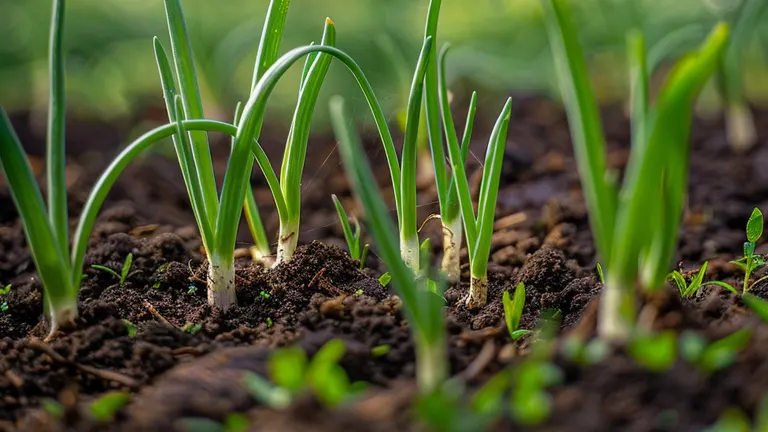
Whether you’re an experienced gardener or a budding green thumb, we’ll help you achieve bountiful harvests that are sure to impress. Let’s get started and unlock the secrets to perfect bunching onions!
Table of Contents
- Understanding Bunching Onions
- Optimal Growing Conditions
- Planting Your Bunching Onions
- Care and Maintenance
- Monitoring Growth and Troubleshooting
- Harvesting and Storing
- Advanced Tips for Enhanced Yield
- Conclusion
- FAQs
Understanding Bunching Onions
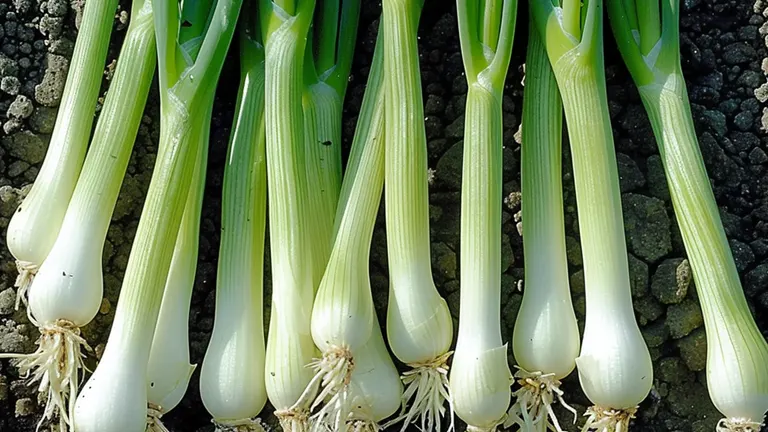
Bunching onions, scientifically known as Allium fistulosum, are a remarkable variety of onion that do not form a bulb as their more common counterparts do. These onions are characterized by their long, slender white bases and vibrant green, hollow stalks. Unlike the bulbous varieties, the entire length of bunching onions, from the fibrous roots to the tips of their leaves, is edible, offering a milder flavor compared to traditional onions.
Growth Characteristics and Lifecycle
Bunching onions are perennial plants in their native habitats, capable of surviving and producing for multiple years. In temperate zones, they are typically cultivated as annuals to maximize yield and quality. These onions are known for their ability to grow in clusters, or “bunches,” which makes them highly efficient in terms of space and harvesting effort.
They thrive in cooler climates but are adaptable to a range of temperature conditions, making them suitable for various geographical locations. The optimal temperature for growth is between 68°F and 78°F (20°C to 25.5°C), though they can tolerate lower temperatures and mild frosts, which makes them excellent for early spring planting.
Scientific Insight and Growth Data
Research indicates that bunching onions have a relatively fast growth cycle compared to other alliums. From seed to harvest, the growth cycle spans approximately 65-80 days depending on the variety and environmental conditions. Below is a table showcasing the typical growth stages of bunching onions:
| Growth Stage | Duration | Description |
|---|---|---|
| Germination | 7-10 days | Seeds sprout and the first shoots appear. |
| Leaf Development | 20-30 days | Rapid leaf growth, requiring nutrient-rich soil for optimal development. |
| Maturation | 35-40 days | Plants mature and are ready for continuous harvest. |
Unique Nutritional Aspects
Bunching onions are not only easy to cultivate but also rich in essential nutrients. They are a good source of vitamins A, C, and K, as well as dietary fiber and folic acid. The green parts of the onion contain higher concentrations of these vitamins compared to the white parts, highlighting the nutritional benefits of using the entire plant.
Ecological and Environmental Impact
These onions are beneficial for intercropping due to their minimal root system disturbance, which helps maintain soil structure and reduces erosion. Their presence can deter many pests naturally, making them an excellent companion plant in mixed crop settings.
Optimal Growing Conditions
Soil Types and Preparation
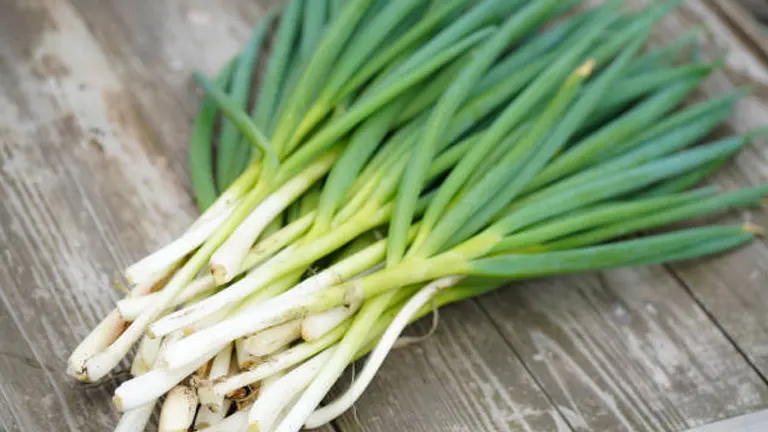
Bunching onions flourish in specific soil conditions that foster robust growth. They require well-drained, loamy soil with a pH level optimally between 6.0 and 7.0. Prior to planting, it is crucial to enrich the soil with organic compost, which enhances soil fertility and improves its structure. This enrichment process is vital as it increases the soil’s organic matter content, which in turn boosts water retention and nutrient availability. Additionally, soil aeration is key—lightly tilling the soil can prevent compaction, thus facilitating better root expansion and efficient nutrient uptake.
For a more scientific perspective, the ideal soil for bunching onions should contain approximately 5% organic matter and have a cation exchange capacity (CEC) of 10-15 meq/100g, which reflects the soil’s ability to hold onto essential nutrients.
Climate and Seasonal Considerations
Bunching onions are notably resilient and adapt well across diverse climates, yet they achieve their best growth under cooler conditions. These onions are ideally planted at two strategic times of the year:
- Early Spring: Just after the last frost when the soil is workable.
- Fall: In regions with milder winters, where the soil remains unfrozen.
To prevent the premature bolting often seen during the hot summer months, which can severely affect both the flavor and size of the onions, strategic timing and possibly shade provision should be considered.
Here is a table summarizing the optimal conditions for growing bunching onions:
| Factor | Ideal Conditions |
|---|---|
| Soil Type | Loamy, well-drained |
| Soil pH | 6.0 – 7.0 |
| Organic Matter | At least 5% |
| Cation Exchange | 10-15 meq/100g |
| Planting Seasons | Early spring post-frost or fall in mild winter regions |
| Temperature | Thrives at 13-24°C (55-75°F); tolerates mild frost |
Additional Insights
Research has shown that bunching onions’ growth rate and bulb development are significantly influenced by the length of daylight. In northern latitudes, longer summer days can accelerate growth, which should be considered when planning planting cycles. Moreover, using mulch can stabilize soil temperature and moisture, further enhancing growth conditions during fluctuating weather patterns.
Planting Your Bunching Onions
Seed Selection
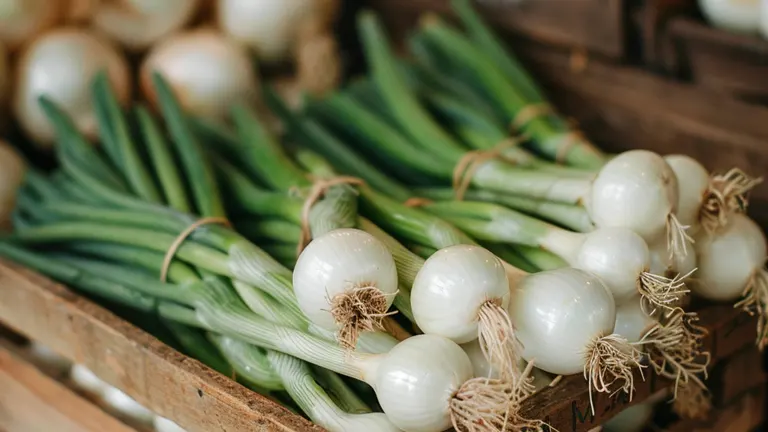
Choosing the right seeds is critical for cultivating robust bunching onions. Opt for seeds from a reputable supplier known for their high germination rates and plant health quality. Scientific studies suggest that germination rates for high-quality bunching onion seeds should ideally be above 85%. To ensure a continual harvest and optimal use of garden space, employ a staggered planting strategy. Plant seeds at two-to-three-week intervals to extend the harvesting period and enjoy fresh onions throughout the season.
Planting Techniques
For optimal growth, sow bunching onion seeds about ½ inch deep in rows spaced 12 inches apart. This spacing allows for adequate air circulation and reduces the risk of disease. When starting seeds indoors, use a high-quality seed starting mix and ensure adequate light. Transplant the seedlings outdoors when they are a few inches tall and after the danger of frost has passed, typically 4-6 weeks after sowing.
Here’s a detailed breakdown of the planting process:
| Step | Description |
|---|---|
| Soil Preparation | Prepare the soil by tilling and adding organic compost for nutrients. |
| Seed Sowing | Plant seeds ½ inch deep and 12 inches apart in rows. |
| Watering | Water gently but thoroughly to settle the seeds without causing erosion. |
| Thinning Seedlings | Thin seedlings to about one inch apart once they are 2-3 inches tall. |
Scientific Insight on Germination and Early Growth
Bunching onions’ seeds begin to germinate at temperatures between 68°F and 77°F (20°C to 25°C), with germination typically occurring within 7-10 days under optimal conditions. The rate of germination and initial growth can be significantly affected by soil temperature and moisture levels.
Advanced Planting Tips
- Pre-Soaking Seeds: Soaking seeds for 12-24 hours in tepid water before planting can enhance germination rates.
- Microclimate Management: Use row covers to create a more controlled environment during the early stages of growth, protecting seedlings from harsh winds and pests.
- pH Monitoring: Regularly check the soil pH, as bunching onions prefer slightly acidic to neutral soil (pH 6.0-7.0). Adjusting pH can prevent nutrient lock-up and foster better growth.
Care and Maintenance
Watering Requirements

Effective hydration is crucial for the optimal growth of bunching onions. These plants generally require approximately one inch (2.5 cm) of water per week to thrive. This can come from rainfall or manual watering methods. During periods of drought or dry weather, regular watering is necessary to maintain soil moisture levels, which should not drop below 40% volumetric water content to avoid stress and stunted growth. Implementing a soaker hose or a drip irrigation system can enhance water efficiency by delivering moisture directly to the roots and minimizing leaf wetness, which can reduce the risk of fungal infections.
Fertilizing Strategies
Nutrient management is vital for the health of bunching onions. A balanced, slow-release fertilizer with a N-P-K (Nitrogen-Phosphorus-Potassium) ratio of 10-10-10 is ideal, applied at planting and midway through the growing season to support continuous growth. For soils with lower fertility, liquid fertilizers can be used bi-weekly; however, it is crucial to adhere to the manufacturer’s recommended dilution rates to prevent nutrient burn, which can occur if the concentration is too high.
Weeding and Pest Control
Maintaining a weed-free environment is essential for the unimpeded growth of bunching onions. Weeds can significantly compete for nutrients and space, impacting onion development. Utilizing organic mulch such as straw or wood chips not only suppresses weed growth but also helps retain soil moisture and regulate soil temperature. For pest management, barriers such as fine netting can prevent attacks from common pests like onion flies and thrips. If pests are detected, organic options like neem oil or insecticidal soap can be effective. It’s important to maintain a chemical pesticide-free approach if aiming for an organic garden, as these can disrupt the local ecosystem and harm beneficial insects.
Monitoring Growth and Troubleshooting
Common Issues
Observing your bunching onions regularly is essential for identifying and addressing issues early. Common signs of stress include yellowing leaves, which often indicate a nitrogen deficiency, and stunted growth, which may suggest a lack of essential micronutrients like magnesium or iron. Premature flowering, known scientifically as bolting, typically results from too much heat or significant fluctuations in temperature. Similarly, thick necks in bunching onions can be caused by excessive nitrogen or inconsistent watering. It is crucial to adjust your care regimen based on these symptoms and seek advice from local extension services that can provide region-specific guidelines.
Growth Milestones
Bunching onions have a well-defined growth cycle from seed to harvest, generally spanning six to eight weeks under optimal conditions. The growth progression can be tracked through specific milestones, which not only help in monitoring the health of the plants but also in determining the perfect timing for harvest.
Here is a detailed table summarizing the growth milestones and common issues, with suggested interventions:
| Milestone | Duration | Description | Troubleshooting Tips |
|---|---|---|---|
| Germination | 7-10 days | Seeds sprout and first shoots appear. | Ensure consistent soil moisture and warmth. |
| Leaf Development | 3-4 weeks | Leaves grow and mature; ready for initial thinning. | Add nitrogen-rich fertilizer if leaves yellow. |
| Bulbing | 5-6 weeks | Bulb formation at the base of the plant. | Ensure balanced light and nutrients. |
| Harvest Readiness | 6-8 weeks | Green shoots reach 6 inches, bulbs swell. | Harvest early to avoid over-maturity. |
Advanced Monitoring Techniques
For gardeners with a more scientific approach, employing a soil moisture meter can provide exact data on when watering is needed, preventing both over and under-watering. Additionally, using a light meter to measure the intensity of sunlight the plants receive can help in adjusting planting location or shading techniques to optimize growth conditions.
Nutritional Adjustments
If nutrient deficiencies are suspected, a foliar application of a micronutrient blend can be beneficial. Products containing chelated forms of iron and magnesium can correct yellowing leaves more efficiently, as these are readily absorbed by the plant tissues.
Harvesting and Storing
When and How to Harvest
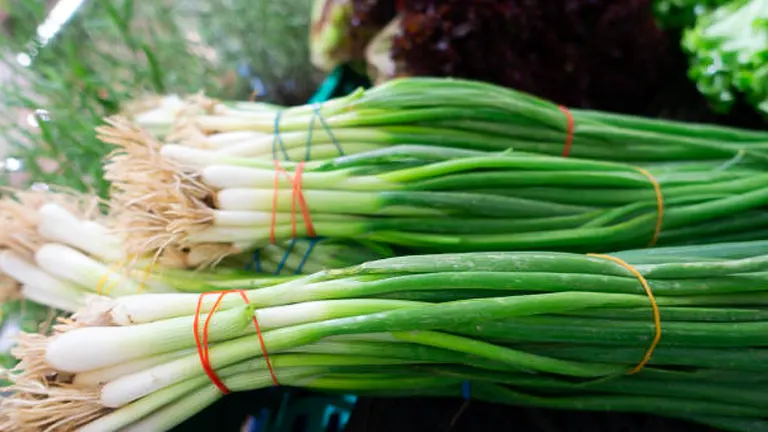
Bunching onions are ready for harvest approximately eight weeks after planting, but they can be picked earlier if you prefer smaller, tender shoots. To harvest, gently pull the onions from the soil using a twisting motion to avoid damaging the roots of adjacent plants. If the soil is compact, use a gardening fork to loosen the earth around the onions.
For a continual harvest, only take what you need, leaving the rest to grow bigger. This method allows the plant to keep producing new shoots, maximizing your yield over a longer period.
Storage Tips
After harvesting, bunching onions can be stored for up to a week in the refrigerator. For longer storage, they can be chopped and frozen in an airtight container for several months. Ensure the onions are dry before storing to prevent mold. If you prefer, bunching onions can also be dried like chives for use in seasoning.
Advanced Tips for Enhanced Yield
Propagation Techniques
Bunching onions offer versatile propagation options. Beyond basic seed planting, division is an effective method for multiplying your plants. During the dormant season, typically late fall or early winter, carefully dig up mature bunching onions and gently separate them at the root cluster. Immediate replanting of these divisions stimulates rapid root development and rejuvenates the plants. This method can yield a 20-30% increase in production due to the revitalized plant vigor.
Scientific Insight on Division Propagation
Research has demonstrated that the timing of division plays a crucial role in the success rate. Dividing during cooler temperatures reduces stress on the plants, leading to higher survival rates and better establishment in their new location.
Companion Planting
Companion planting is a strategic approach that enhances the growth environment. Bunching onions produce certain sulfur compounds which act as natural pest deterrents, making them excellent companions for many garden vegetables. Here are a few scientifically supported pairings:
- Carrots and Onions: The strong odor of onions masks the carrot scent from root flies, and vice versa, protecting both.
- Beets: Onion presence can discourage beet leaf miners.
- Tomatoes: The onion smell can help repel aphids, which are common tomato pests.
Including aromatic herbs like mint and marigold not only bolsters this pest resistance but can also attract beneficial insects which aid in pollination and pest control.
Table of Optimal Companion Plantings
| Companion Plant | Benefits | Notes |
|---|---|---|
| Carrots | Reduces susceptibility to root flies | Plant in alternate rows with onions |
| Beets | Lowers incidence of leaf miners | Beneficial due to different nutrient demands |
| Tomatoes | Helps repel aphids and other pests | Mutual benefit for growth and pest control |
| Mint | Repels a variety of insects and attracts beneficial ones | Plant on the perimeter to avoid overgrowth |
| Marigold | Attracts beneficial insects and repels nematodes | Useful as a border or interplanted |
Further Enhancements
- Mulching with Straw: This can regulate soil temperature, retain moisture, and suppress weeds, directly influencing the growth rate and health of bunching onions.
- Regular Soil Testing: To ensure the soil maintains optimal nutrient levels for bunching onions, regular testing can guide your fertilization strategy, particularly for nitrogen, potassium, and phosphorus.
Related Post
- How to Build a Barn: A Step-by-Step Guide for Beginners
- How to Build a Sustainable Compost Bin: Easy and Eco-Friendly DIY
- How to Fertilize Bougainvillea: A Complete Guide for Stunning Blooms
- How to Fertilize Apple Trees: Essential Tips for a Bountiful Harvest
- How to Fertilize Lemon Trees: Secrets for Thriving Citrus
- How to Fertilize Avocado Tree: A Step-by-Step Guide for Lush Growth
- 10 Best Bow Saws to Buy in 2024: Top Picks for the Money
- Best Miter Saw For Beginners
- Top 10 Pruning Saws to Buy in 2024: Best for the Money
- 7 Best Pocket Chainsaw
Conclusion
Growing bunching onions is a rewarding endeavor that adds value to your garden and dining table. By following these essential tips and using the advanced techniques provided, you can ensure a successful and productive onion crop. Embrace the process, and enjoy the fruits of your labor in delicious dishes year-round.
FAQs
- What is the best month to plant bunching onions?
Bunching onions can be planted in early spring as soon as the soil is workable. For continuous harvests, plant seeds every two to three weeks up until late spring. In mild winter regions, planting can also occur in the fall. - Can bunching onions grow in partial shade?
Yes, while bunching onions prefer full sun, they can tolerate partial shade. However, less sunlight may result in slower growth and thinner onions. - How deep should I plant bunching onion seeds?
Bunching onion seeds should be sown about ½ inch deep in the soil. Ensure they are covered lightly with soil to allow for easy sprouting. - Do bunching onions require a lot of water?
Bunching onions need consistent moisture to thrive, especially during dry periods. Aim for about an inch of water per week, either from rainfall or watering, to keep the soil evenly moist. - What should I do if my bunching onions start to flower?
If your bunching onions start to flower, they are bolting, which is often caused by too much heat or fluctuations in temperature. You can still harvest and eat them, but the flavor might be slightly altered. To prevent bolting, provide consistent water and mulch to keep the roots cool. - How do I know when my bunching onions are ready to harvest?
Bunching onions are typically ready to harvest when the green shoots are about six inches tall and the bulbs have formed but are still small. You can start harvesting as needed once they reach this size. - Can I use mulch around my bunching onions?
Yes, mulching is beneficial for bunching onions. It helps maintain soil moisture, suppresses weeds, and keeps the soil temperature stable. Organic mulches like straw or shredded leaves are ideal. - What are some companion plants for bunching onions?
Good companions for bunching onions include tomatoes, carrots, beets, and strawberries. These combinations help deter pests and can enhance the growth and flavor of the plants.
Ready to grow your own bunching onions? Follow these essential tips and watch your garden thrive. Happy gardening!

Benjamin Brooks
Forestry AuthorGreetings! I'm Benjamin Brooks, and my journey over the past 15 years has revolved around the fascinating realms of content creation, expertise in snow clearing, and the intricate world of lumberjacking and landscaping. What began as a simple curiosity about the natural world and heavy machinery has evolved into a passionate profession where my love for crafting words intertwines seamlessly with my lumberjacking and garden skills.

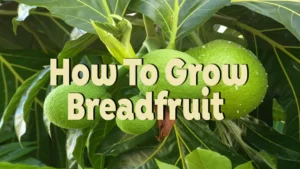



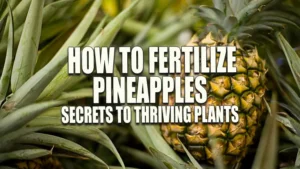




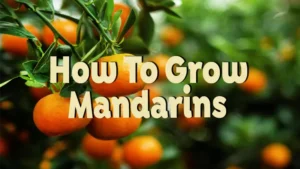
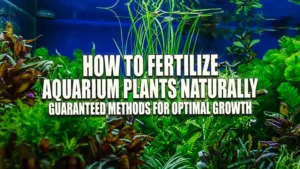

Leave your comment